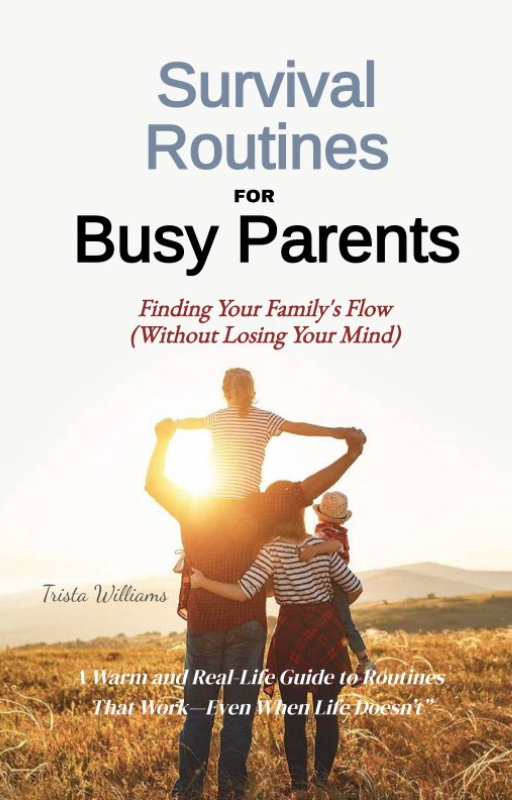Examples of Bad Parenting: Stories, Real-Life Mistakes, and Better Ways Forward
When you become a parent, certain harmful patterns become habits and they can negatively affect a child’s confidence, mental health, and ability to thrive later in life. The good news? Once you recognize these examples of bad parenting, you can shift them into positive approaches.

By looking at some real-life parenting mistakes side by side with healthier alternatives, you will clearly see the impact of each choice.
Want a quick side-by-side overview? Jump to the Examples of Bad Parenting vs. Good Parenting Chart.
1. Ignoring a Child’s Attempts to Talk
Bad Parenting Example:
A child runs up excitedly to share something about their day at school, but the parent scrolls through their phone or brushes them off with a quick, “Not now, I’m busy.” Over time, the child may stop trying to share altogether, feeling invisible or unimportant.
Good Parenting Contrast:
Even if you’re in the middle of something, pause for just a few seconds to say, “I really want to hear about this. Can you tell me in five minutes once I finish?” Later, give them your full attention. This teaches them their voice matters and builds trust.
2. Harsh Punishment Instead of Guidance
Bad Parenting Example:
A child spills juice on the carpet. Instead of seeing it as an accident, the parent yells, threatens, or assigns a punishment that feels out of proportion, such as grounding them for a week. The child learns fear instead of responsibility.
Good Parenting Contrast:
A healthier approach is teaching problem-solving. “Oops, accidents happen. Let’s grab a towel together and clean it up.” This not only fixes the mess but also models accountability and resilience without shame.
3. Constant Criticism Without Praise
Bad Parenting Example:
The child shows a math test with a score of 85. The parent immediately says, “Why didn’t you get 100?” Over time, the child feels like nothing is ever good enough, which can harm self-esteem and create perfectionism.
Good Parenting Contrast:
A more balanced approach celebrates effort while offering guidance. “Wow, you worked hard on this! I see you struggled with a couple of questions—want me to help you figure them out together?” This encourages learning and persistence.
4. Overprotectiveness That Stifles Growth
Bad Parenting Example:
The parent insists on controlling every detail of the child’s life—what they wear, who they play with, and how they spend their time. Though it comes from love, it prevents children from learning independence.
Good Parenting Contrast:
Instead, offer safe, age-appropriate choices. “Would you like to wear the red sweater or the blue one today?” No matter how small the choices may be, it teaches responsibility and confidence, preparing kids for bigger decisions later in life.
5. Showing Favoritism Between Siblings
Bad Parenting Example:
One child’s artwork gets constant praise, while another child’s effort is overlooked. Such favoritism can cause resentment, sibling rivalry or feelings of inadequacy.
Good Parenting Contrast:
Recognize and value each of your child’s unique strengths. “I love how you used bright colors in your drawing, and I can see the effort you put into building your Lego tower.” Each child feels seen and appreciated.
6. Using Shame as Discipline

Bad Parenting Example:
After a poor grade, the parent says, “You’re lazy and you’ll never succeed if you keep this up.” This shames the child’s identity rather than addressing the behavior, damaging self-worth.
Good Parenting Contrast:
Address the action, not the child. “I noticed you didn’t study much this week, and it showed on your test. How can we create a better plan together?” The child feels guided rather than attacked.
7. Dismissing Dreams and Interests
Bad Parenting Example:
A child says, “I want to be an artist!” The parent responds, “That’s silly. You’ll never make money doing that.” The child may stop sharing their passions, feeling unsupported.
Good Parenting Contrast:
Instead of dismissing, show curiosity. “That sounds exciting! What do you like to draw most?” Supporting their interests—no matter how temporary—boosts confidence and creativity.
8. Withholding Affection as Punishment
Bad Parenting Example:
When a child misbehaves, the parent gives them the silent treatment or withholds hugs and affection. The child learns that love is conditional.
Good Parenting Contrast:
Discipline the behavior while keeping affection consistent. “I love you, but it’s not okay to hit your brother. Let’s talk about a better way to handle anger.” The child knows love is secure, even during correction.
Why These Contrasts Matter
Children are resilient, but repeated negative patterns can leave lasting effects on their self-esteem, emotional regulation, and even future relationships. However, when you use good parenting practices you will be helping your child feel safe, valued and capable.

Every scenario above shows that it’s not about perfection—it’s about awareness and small shifts. Choosing empathy over criticism, guidance over punishment, and presence over distraction makes a world of difference.
Key Takeaway
Reading about examples of bad parenting can feel heavy, especially if you recognize some of these patterns in your own life. Keep in mind — awareness is the first step toward positive change.
If you recognized yourself in some of these examples, don’t worry—you’re not the only one and you likely will not be the last one.
Real-life parenting mistakes are opportunities for growth, not life sentences. By recognizing patterns, reflecting honestly, and committing to change, you can rewrite your family’s narrative.
Examples of Bad Parenting vs. Good Parenting: A Clear Comparison
| Scenario | Bad Parenting Example | Good Parenting Contrast |
|---|---|---|
| Child wants to share something | Parent ignores or brushes them off. | Parent pauses, listens, or schedules a time to give full attention. |
| Accidental spill | Parent yells or punishes harshly. | Parent stays calm, involves the child in cleaning, and teaches responsibility. |
| School performance | Parent criticizes the grade without praise. | Parent acknowledges effort and offers help on areas of struggle. |
| Decision-making | Parent controls every choice, limiting independence. | Parent allows age-appropriate decisions to build confidence. |
| Siblings | One child receives more praise or freedom than the other. | Parent highlights each child’s unique strengths fairly. |
| Discipline | Parent uses shame (“You’re lazy” or “You’ll never succeed”). | Parent addresses the behavior, not the child, and guides improvement. |
| Dreams & Interests | Parent dismisses ideas (“That’s silly, you can’t do that”). | Parent shows curiosity and encourages exploration of interests. |
| Affection | Parent withholds love as punishment. | Parent disciplines behavior but keeps love and affection consistent. |
If this article struck a chord with you, share it with other parents and check out our guide on How to Break the Cycle of Bad Parenting to start making positive changes today.
Psychology Behind Bad Parenting
Break the Cycle of Bad Parenting



















New! Comments
Have your say about what you just read! Leave me a comment in the box below.